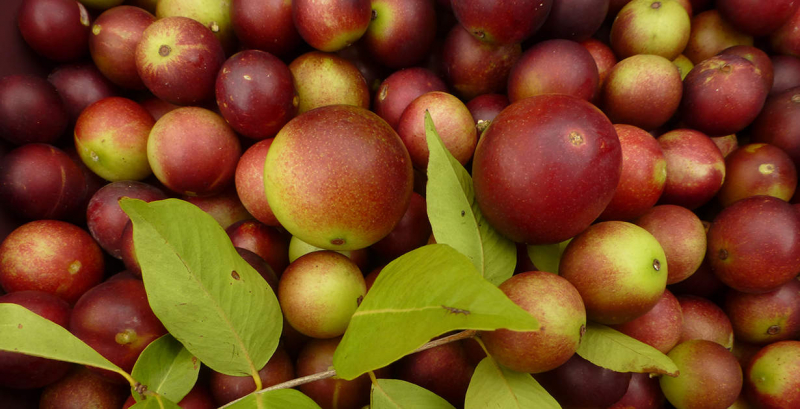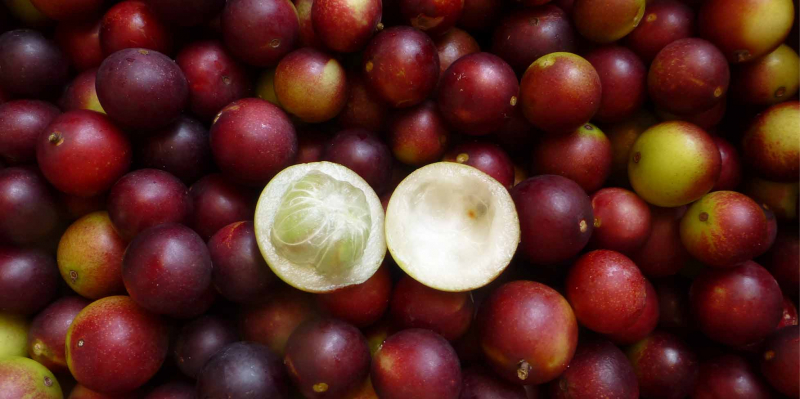Camu Camu
Camu Camu berries, botanically classified as Myrciaria dubia, are tart, Amazonian fruits belonging to the Myrtaceae family. The shrubs that bear the vibrant berries are indigenous to the floodplains, riverbanks, and marshes of the Amazon rainforest, growing up to a height of 3 to 5 meters. In South America, Camu Camu is also referred to by a number of other names, including Araza de Agua or Cacari in Brazil, Mitu in Colombia, Guayabito in Venezuela, and Camo Camo in Peru. One Camu Camu shrub may yield more than 12 kg of fruit per season, and the berries have most recently caught the eye of global consumer markets as a fruit with a high nutritional value.
Small fruits with a round, oval, or ovate shape, camu camu berries have a diameter of 2 to 3 cm. Smooth, taut, and semi-thin, the fruit's skin is green when young and changes to variegated red-green to dark red-purple shades when it is ripe. High concentrations of citric and ascorbic acid give camu camu berries their acidic, tart, sour, subtly fruity flavor. Because of this, berries are frequently thought to be unpleasant to eat on their own and need additional sweeteners to balance the tangy flavor. Along with the berries, Camu Camu bushes also produce fragrant white blooms that draw helpful pollinators during specific seasons.












